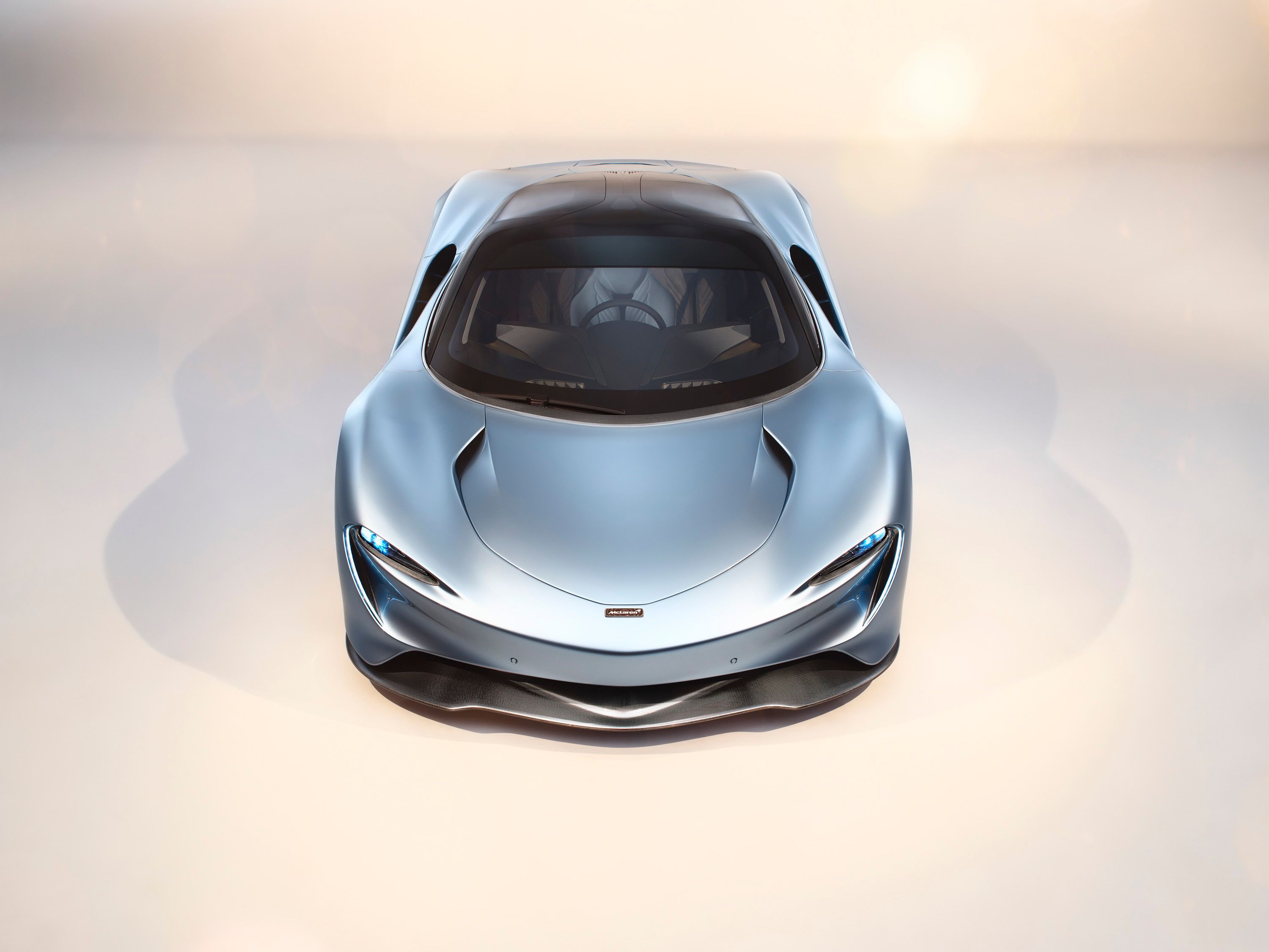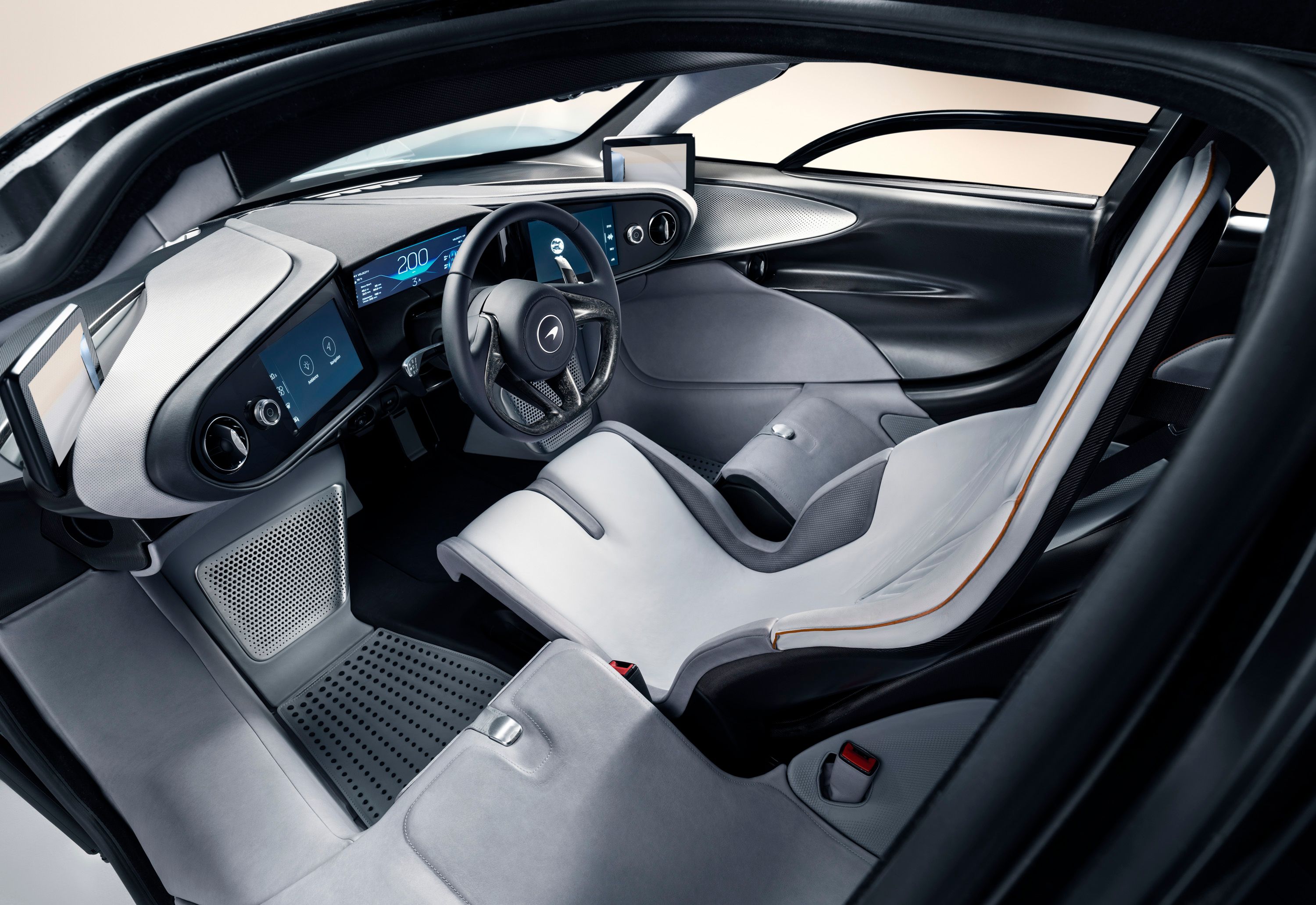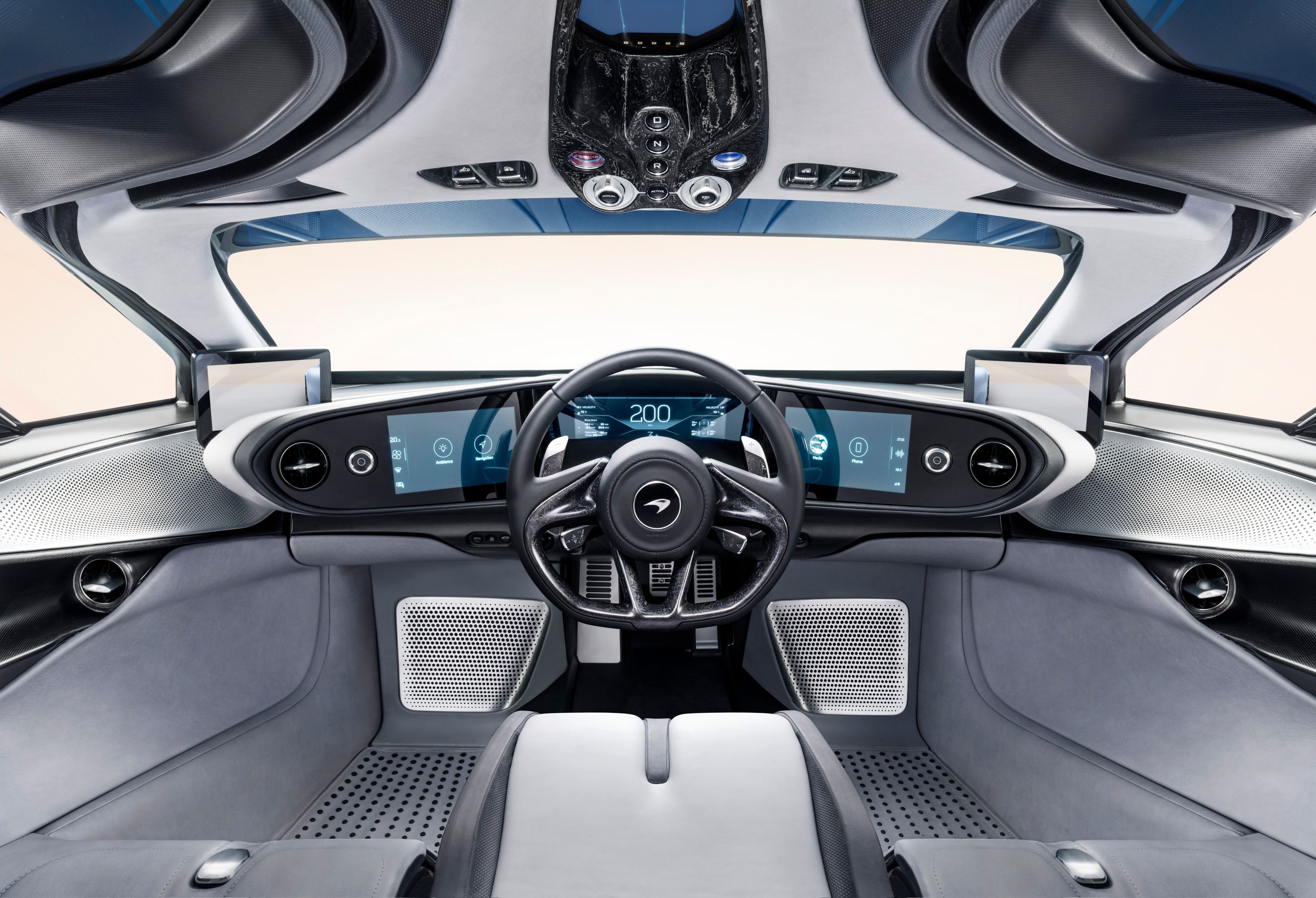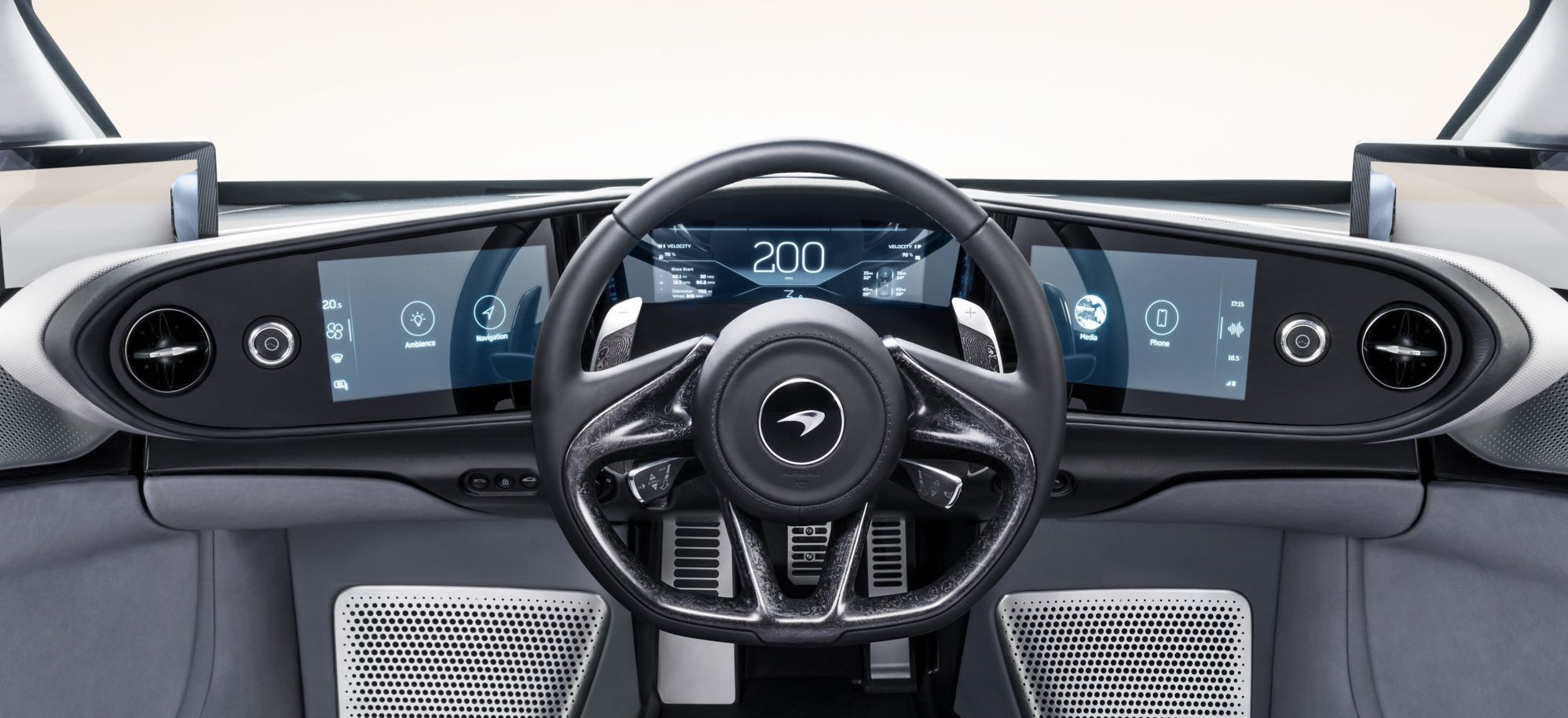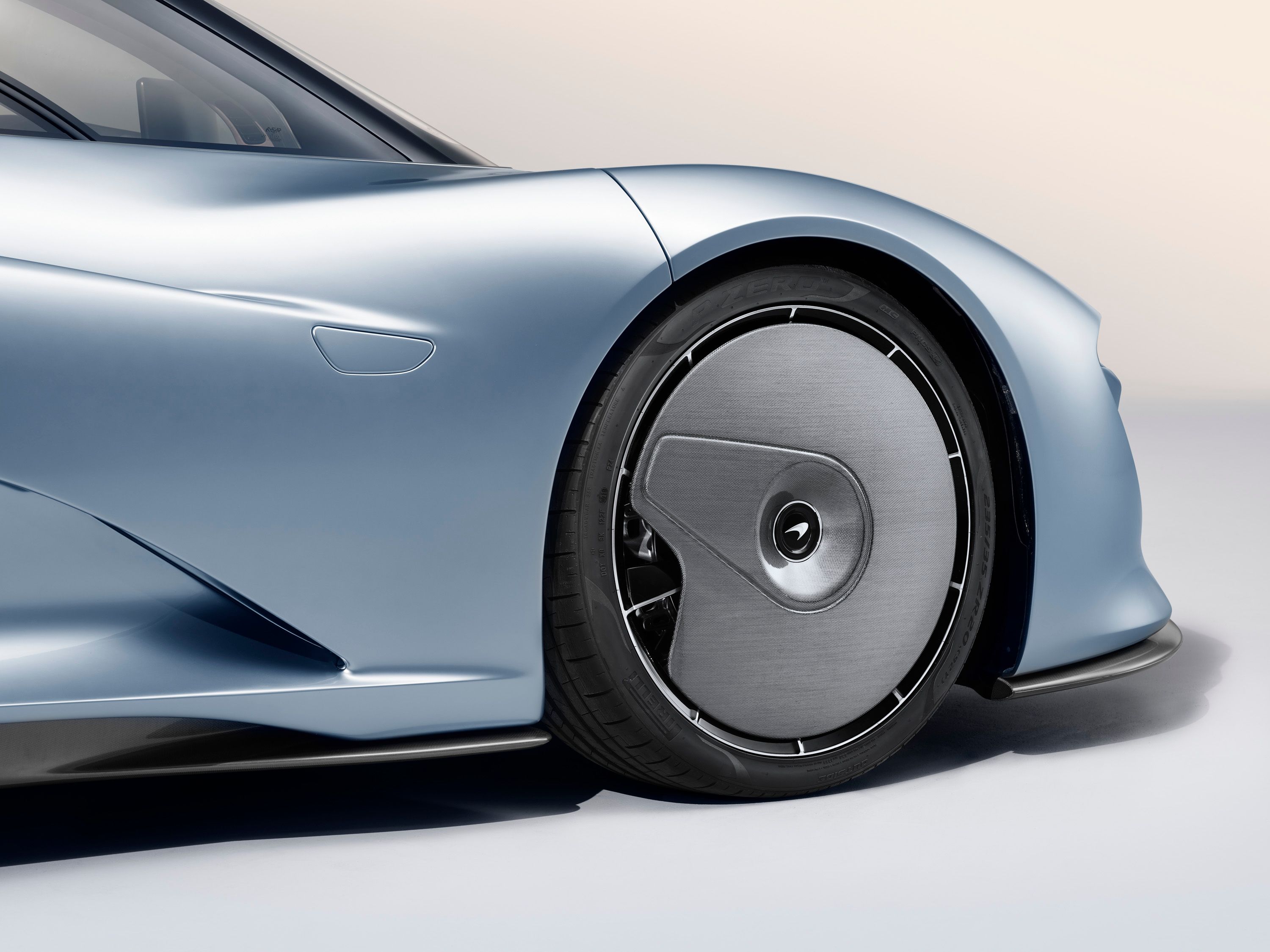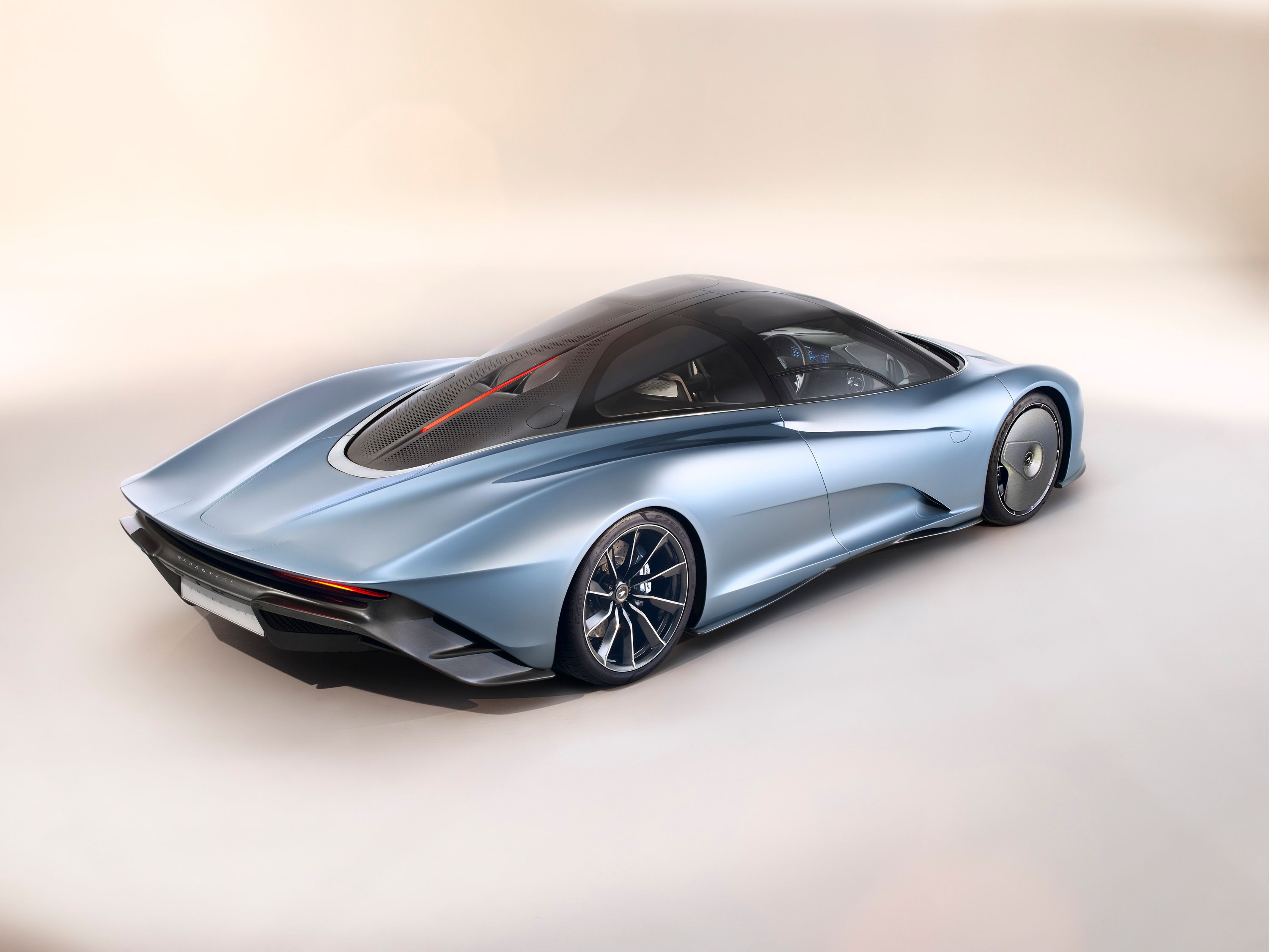McLaren's highly anticipated "Hyper-GT," the Speedtail, was unveiled today with a set of new benchmarks for the British company. The teardrop-shaped supercar is not only the most powerful but also the fastest McLaren ever built.
Extreme Aerodynamics
Although it shares some design features with the 720S up front, the Speedtail is a radical departure from everything else McLaren has built to date. It's hard to believe considering the Senna, but the Speedtail is indeed the most aerodynamically drag efficient McLaren in history. Features that made this possible include the very long, boat-tail-style rear section, the teardrop-shaped cockpit, front wheel covers, retractable side cameras, and patented, active rear ailerons.
Just like its spiritual predecessor, the F1, the Speedtail features a full carbon-fiber body. Unlike the Senna, which is packed with race-inspired features and sharp cues, the Speedtail boasts a flowing, more organic design. It's decidedly futuristic compared to modern supercars.
Central Driver Seat
For the first time since the F1, McLaren created a new supercar with a center-mounted driver's seat. Not only it provides a race-inspired experience, but it also creates a new sense of space and a balanced view out of the windscreen. Just like the F1, the Speedtail features a custom-made carbon-fiber seat. Each will be crafted based on precise specification from the owner for the best support and comfort.
The seat is wrapped in a newly created directional leather that makes it easy to slide into but subtly holds the occupant in place while they drive. The central seat is flanked by two passenger seats that are integral to the carbon fiber monocoque.
State-of-the-art Technology
The dashboard of the Speedtail looks like that of a space shuttle, mostly because almost the entire dashboard is covered with digital displays. There's one just in front of the steering wheel and two more on the sides. Both are quite big and provide tons of information about performance and provide access to the infotainment system.
Tailored Luxury
While the Senna is focused on performance and looks like a race car inside the cabin, the Speedtail steers toward luxury, despite the center-mounted driver's seat. Inspired by the worlds of high fashion, luxury yachts, and furniture, the cockpit looks modern and innovative and combines contemporary craftsmanship with cutting-edge techniques.
One of them is the use of a special composite obtained from combining carbon-fiber with traditional Italian textile. McLaren calls it a "digital loom process" and claims it's even lighter than the carbon-fiber itself. The Brits also used the technique to develop a unique carbon-fiber and titanium weave, which adds strength and creates a chrome effect.
Working in collaboration with Swiss watchmaker Richard Mille, McLaren also developed a world-first in the automotive industry: Thin-Ply Technology Carbon Fibre (TPT). Made from ultra-thin carbon layers just 30 microns in depth, it was integrated into small details like badges, gearshift paddles, and the steering wheel clasp.
In addition to these lightweight materials, McLaren also used high-grade leather throughout the interior. There's full- and semi-aniline leather made from Scandinavian hides and various stitch patterns. You can customize both the leather and stitching and select whichever color you wish, as well as create decorative forms within the hide. McLaren says it wants "to push color and materials design into unchartered territory with the Speedtail so that "owners will experience an unprecedented journey of vehicle personalization."
Huge Hybrid Power
Moving over to the oily bits, the Speedtail hides a hybrid drivetrain under the skin. McLaren doesn't say what it combines, but it's most likely a development of its twin-turbo, 4.0-liter V-8 engine and a couple of electric motors. What we do know is that it cranks out a whopping 1,050 PS, which converts to 1,035 horsepower. Torque definitely exceeds the 1,000-pound-foot mark.
The most powerful McLaren yet, the Speedtail is also the fastest, hitting a top speed of 250 mph. That's seven mph more than the McLaren F1, the world's fastest production car before the Bugatti Veyron. McLaren further unveils that the Speedtail needs only 12.8 seconds to hit 186 mph, which makes it 3.8 seconds quicker than the P1. No word on 0-to-60 mph sprints, but it should be the quickest McLaren in this department too.
The supercar also features a unique Velocity drive mode that optimizes the powertrain and tailors the aero elements for maximum speed. When activated, the side-view cameras retract, and the active aluminum suspension lowers the car by 1.4 inches.
Limited, Expensive, and Sold Out
McLaren will build only 106 examples of this supercar. The production figure is a tribute to the F1, also made in 106 units. Pricing for the Speedtail starts from £1.75 million in the United Kingdom. U.S. pricing information is not yet available, but it will probably fetch more than $2 million before options. However, you won't be able to buy one even if you have the money, because all 106 units are already spoken for. Big surprise, huh?
2019 McLaren Speedtail specifications
|
Engine |
petrol-electric hybrid powertrain |
|
Horsepower |
1,035 HP |
|
0 to 186 mph |
12.8 seconds |
|
Top Speed |
250 mph |
|
Weight |
3,153 LBS |
|
Price |
£1.75million plus taxes |
Further Reading
Read our full speculative review on the 2019 McLaren Speedtail.
Read our full review on the 2019 McLaren Senna.
Read our full review on the 2014 McLaren P1
Read our full review on the 1993 McLaren F1

